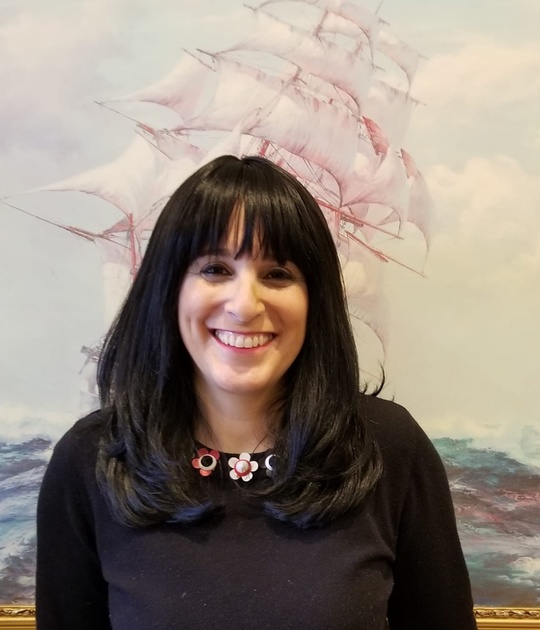
Here's another one, People.
Yep. Another column about the therapeutic relationship.
Because I went to this phenomenal workshop a couple of weeks back and as I was listening to the John Norcross speak (he wrote some great books on the therapeutic relationships), I thought, “Hey, clients should be hearing this!”
(Have you ever noticed that whenever I attend a workshop, a column about what I learned emerges? Not only are you getting free therapy in my columns, but free training too. I know, I know. I'm beyond wonderful.)
What made this workshop so relevant is that it not only explained to clinicians what in the relationship is important for therapeutic change in clients, but also seemed equally informative for potential clients to understand what they should be looking for and finding in a therapist in order to make their therapy work best.
In a nutshell, therapy is a shidduch. The single most important thing about effective therapy to effect change in a person is all about the perfect match—or, almost perfect match—between therapist and client. Norcross calls it responsive matching.
And I am going to tell you something no therapist (like me) wants to believe. There is simply no evidence that receiving certification in any kind of therapy improves effectiveness! Training, yes. Certification, no. Even worse, except for a few types of situations, research says that the efficacy of treatment depends more on the therapeutic relationship than on the specific treatment modality used. Which means, for all of you who call me and ask, “Do you do EMDR?” (yes) “Do you do DBT” (no); it simply does not matter. What matters is how we click, and that I can create a new therapy for each client that depends not on my training, but on my client's needs.
Of course training, and ongoing training matters, but it doesn't matter which!
So while it is true that OCD, trauma, and anxiety needs exposure therapy, it is even more true that any type of exposure therapy works. And the outcome is dependent more on the relationship than on which type of modality is used. Even more, research in fidelity to a specific treatment, meaning someone trained specifically in one treatment modality and only practices within that framework, proves that not only is there no difference in treatment outcomes to someone more generally trained. And to add insult to injury, rigidity to a single modality of treatment actually interferes with successful treatment.
So here is what you need to know when you are looking for a therapist. Match yourself to a therapist, not a modality.
Do you want to know which variable percentages affects therapy outcomes?
You are not going to believe it, but here goes. 40 % is unexplained. We just don't know what caused the success (I'm outta business after this article comes out, I know.). 30% is the patient contribution to therapy (motivation, self-work). 12% is the therapy relationship. Only 8% is the particular treatment method used (although other researchers think it’s zero! Obviously, they believe a therapist needs a treatment method, but which one doesn’t make a difference.). 7% is about the individual therapist (meaning, that no matter a therapist's training, a person can be trained up to that 7% that is simply his/her individuality that cannot be replicated. And yes, some people are naturally better therapists even with the exact same training. It's proven.). The last 3% are other factors that can be explained but have nothing to do with therapy or the client (like the bully in school moves away so the problem is solved; or, the client goes into remission from cancer or graduates.)
Get this? Therapy is 12% the relationship, 7% the personality of the therapist, and the rest is either the client's work or unexplained/irrelevant factors! Oh, yeah; and 8% is actually using some sort of therapeutic modality although it makes zero to little difference which.
This is scary research, my dear readers!
Because it's all about compatibility; a good fit between client to therapist and the relationship.
But therapists know this. Ask any therapist who is in therapy, what worked, and the answer would be the relationship (even if the therapist chose a therapist with a specific modality).
And here is why.
For example, deep empathy cannot be taught; it’s inborn—and this is the highest aspect of the therapeutic relationship—the factor that research shows has the highest evidence for effective treatment outcome. On the other hand, clients with insecure attachment account for highest rate of dropouts, and the single most important thing a therapist must do with such a client is build an secure attachment so s/he will not drop out.
CBT has nothing to offer people in the pre-contemplation or contemplation stages of change in treatment; and psychodynamic therapy has nothing to offer people who have reached awareness of self and now are up to action for change.
I remember my wonderful supervisor at my second year internship who coined the phrase fake work to explain to me how sometimes I need to use CBT, to give clients homework to do to make clients think the therapist’s is earning her salary and doing something while the therapist is doing a totally different work—of building the relationship—that will help the client actually engage in their real therapeutic work, whatever form that will end up being.
You want to hear something funny? Research shows that a maximum. of 5 degrees, or certificates hanging on the wall engenders client respect in therapist’s expertise. More seems pretentious, less seems like the therapist hasn’t gotten a good education!
Okay, then. Now you know the relationship is most important. But what makes that relationship to begin with?
A therapy who has empathy, who can form an alliance with each individual when it's couple or family counseling, when there is goal consensus between client and therapist (you both know what you are doing in therapy!), positive regard and support for a client (and the client needs to feel it; not the therapist says s/he has/is doing it!), when the client and therapist are both able to feel affect in session,and when there is a real relationship (outside of the transference or alliance).
A real relationship is possible when a therapist is able to be genuine with a client (experience and age increases this ability), repair relationship ruptures, use self-disclosure, and manage their counter-transference.
A therapist needs to be attuned to the reactance level of a client; to match their reactance level to the clients. Reactance is how a client reacts in a relationship with others (i.e. defensiveness, hostility, criticism, cynicism, avoidance, hurt). When reactance is high, the therapist needs to step back and lay low; low reactance calls for more direct guidance and directives.
A therapist needs to realize at which stage of change a client is holding at any given time in therapy; pre-contemplation, contemplation, preparation, action, or maintenance. Each of their stages speak for themselves.
A therapist needs to be open to a client's preference in treatment. For example, structured versus unstructured sessions. And if a therapist cannot accommodate those preferences, how are they worked out in treatment?
It would be judicious for a therapist to find out what prior treatment the client attended and what worked/didn't work and why to learn from those experiences.
Believe it or not, matching a client based on gender or religion/culture do not show a difference in therapy outcome except when there is a strong client preference.
Therapist-centricity (like ego centricity but it’s about the therapist and not the client!) is deadly to the therapeutic relationship. So are ostrich behaviors in which the therapist's head is way stuck in the sand (especially ignoring early ruptures hoping they will go away…dumb).
And a client needs to be aware as well how their therapist's personality and training may impact the relationship. Arnold Lazarus said that therapists are human chameleons that can change colors. That is the relational responsiveness this article is about. But sometimes, therapists reach their own limitations like any human being can; and like Dr. Norcross said in our workshop, “I don't do plaid.”
And when a therapist doesn't do plaid, that's okay. But that therapist may not be for you.
And me? I'm off to another training.
NOTE: originally published by Binah Magazine
NOTE: a special shout out to Dr. Chaim Neuhoff at Nachas Consulting who brought John Norcross in for this phenomenal workshop...among the other excellent workshops Nachas COnsulting makes available to the public!
Look me up on LINKEDIN https://www.linkedin.com/in/mindy-blumenfeld-a8067583
Check out my book THERAPY SHMERAPY, available in bookstores and through Amazon
Browse through my previously published articles on my former blog Therapy Thinks and Thoughts at frumtherapist.com/profile/MindyBlumenfeldLCSW
Read current articles in my bi-weekly column THERAPY: A SNEAK PEEK INSIDE in Binah Magazine, available on newsstands every Monday.
 Previous
Previous

